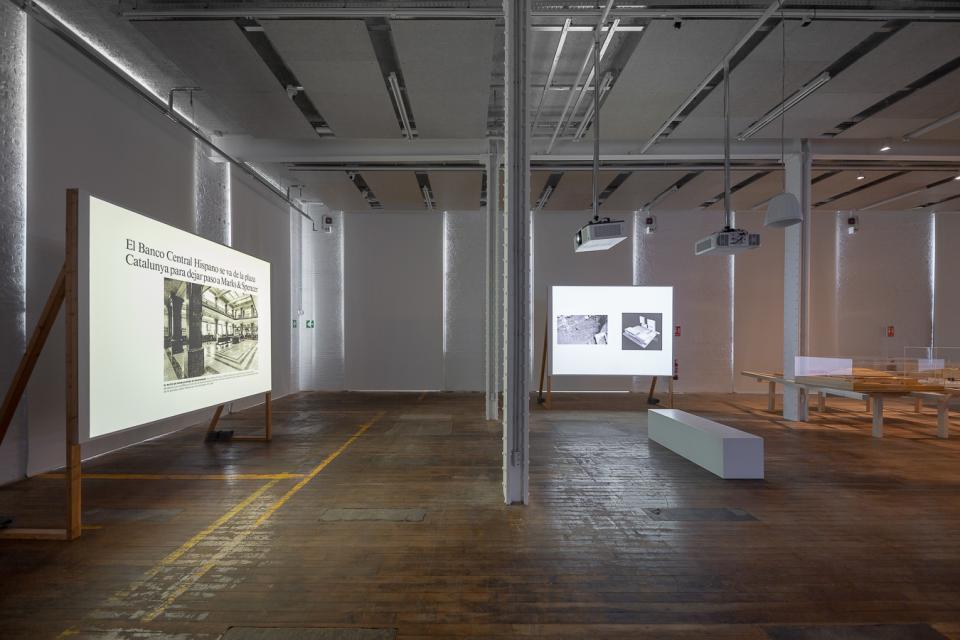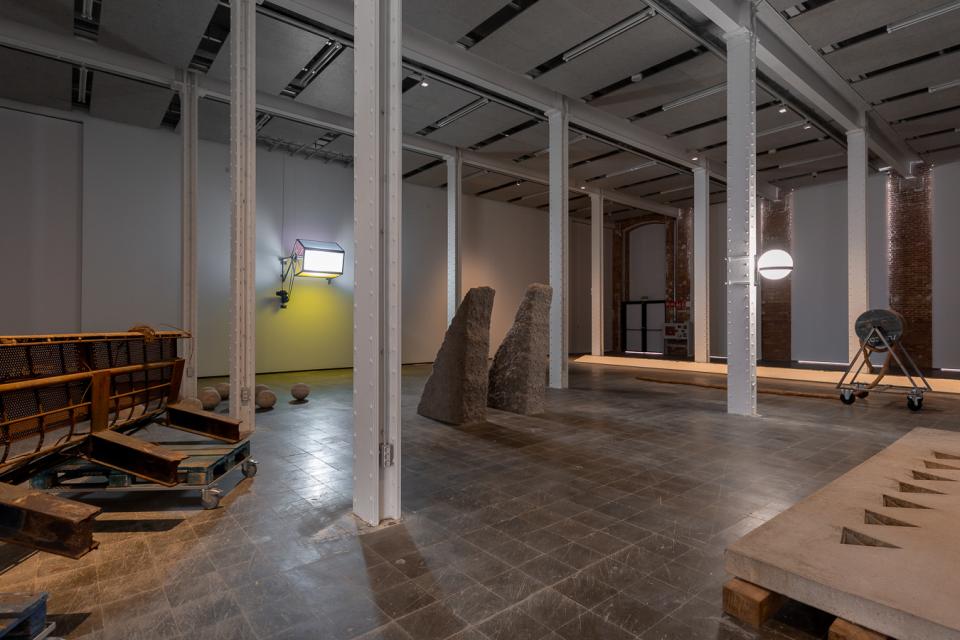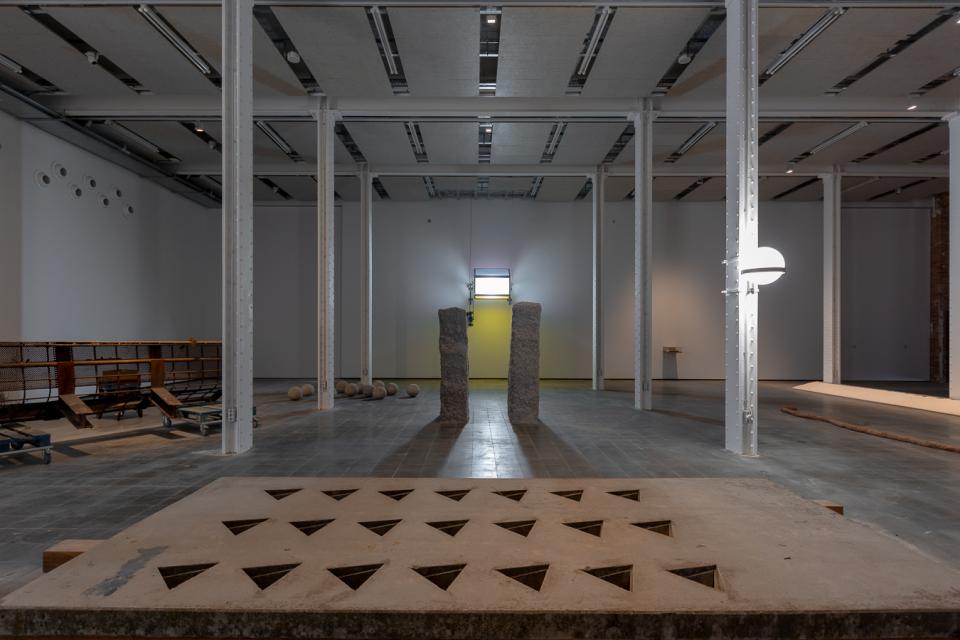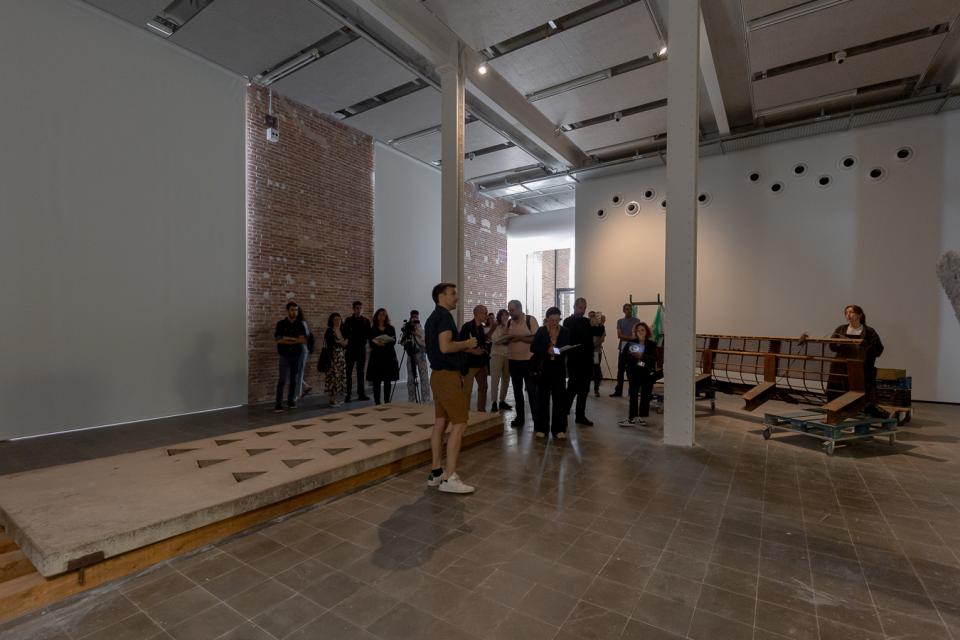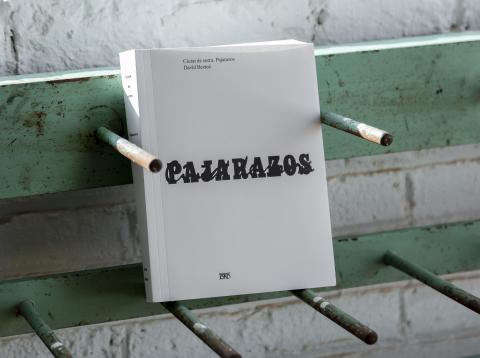City of Sand
A huge storm washes up tins and plastic from the past forty years onto the sand of the beach. The remnants of a mediaeval well, now in a construction sack, hold different vestiges that make it possible to discover the daily habits of people who were here long before we were. At a junction beneath the Ronda de Dalt ring road, piled in a corner, are large pieces of concrete that were once part of the Olympic Archery Field, designed by Enric Miralles and Carme Pinós for the Olympic Games. In the centre of Barcelona, a mill wheel embedded in the ground marks the highest spot of what was the Roman city. David Bestué considers this wheel an element that devours everything, crushing the city, turning it into sand.
For City of Sand, David Bestué proposes a shift in the way we look at the city of Barcelona. Understanding it as material and symbol, the artist contrasts the projected dream idea of city – ambitious urban projects in model form – with popular and counter imagery – in the shape of images in the press, revolts and cries that go against the grain, set out in newspapers, which become shared impressions in the collective subconscious of all those who inhabit the city. In a way, Bestué builds a contra-history out of what can be found on the fringes, using the scraps, remnants and debris.
Curated by Marta Sesé.
With the support: La Vanguardia, Hangar, Urbidermis & TMB.
__
David Bestué (Barcelona, 1980) is an artist interested in the relationship between art and architecture. He has created artwork on Enric Miralles, Viaplana & Piñón, El Escorial and the recent history of Spanish architecture and engineering. Another of his areas of interest is the relationship between sculpture and language, visible in some of his exhibitions including ROSI AMOR at Museo Reina Sofía (Madrid, 2017), Pastoral at La Panera (Lleida, 2021) and Aflorar at Museo Jorge Oteiza (Pamplona, 2022). He has also curated various exhibitions, such as El sentit de l’escultura at Fundació Joan Miró (Barcelona, 2021).
Marta Sesé Fuentes graduated in History of Art from Universitat de Barcelona and has a master's in Contemporary Art History and Visual Culture from Universidad Autónoma de Madrid, the Complutense University of Madrid and Museo Reina Sofía. She works and researches as a curator, editor and art critic. Her interests revolve around the critique of imageries, resistance to the uniformity of aesthetics and experience, temporalities and their connection to materials, and the construction of forms of belonging. She is currently the editorial coordinator at MACBA, collaborates regularly with EXIT publishing house and writes for various journals specialising in contemporary culture. She also co-founded the Higo Mental project. With her work, she has participated in centres such as CA2M, MNAC, Conde Duque, Homesession, Dilalica, Arte92, Akademin Valand, MACBA, Can Felipa and Arts Santa Mònica, among others.



